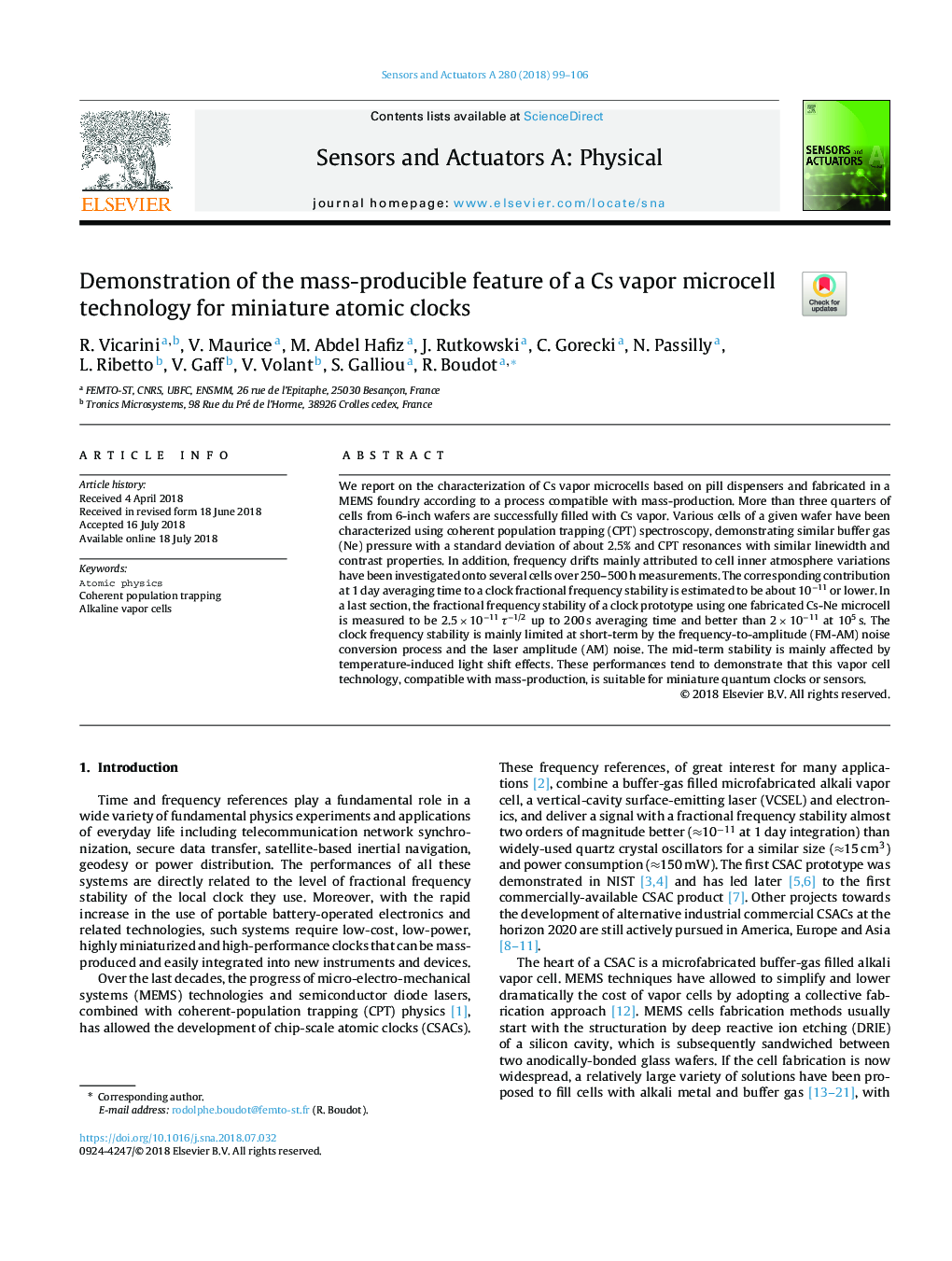| Article ID | Journal | Published Year | Pages | File Type |
|---|---|---|---|---|
| 9952718 | Sensors and Actuators A: Physical | 2018 | 8 Pages |
Abstract
We report on the characterization of Cs vapor microcells based on pill dispensers and fabricated in a MEMS foundry according to a process compatible with mass-production. More than three quarters of cells from 6-inch wafers are successfully filled with Cs vapor. Various cells of a given wafer have been characterized using coherent population trapping (CPT) spectroscopy, demonstrating similar buffer gas (Ne) pressure with a standard deviation of about 2.5% and CPT resonances with similar linewidth and contrast properties. In addition, frequency drifts mainly attributed to cell inner atmosphere variations have been investigated onto several cells over 250-500â¯h measurements. The corresponding contribution at 1 day averaging time to a clock fractional frequency stability is estimated to be about 10â11 or lower. In a last section, the fractional frequency stability of a clock prototype using one fabricated Cs-Ne microcell is measured to be 2.5â¯Ãâ¯10â11â¯Ïâ1/2 up to 200â¯s averaging time and better than 2â¯Ãâ¯10â11 at 105â¯s. The clock frequency stability is mainly limited at short-term by the frequency-to-amplitude (FM-AM) noise conversion process and the laser amplitude (AM) noise. The mid-term stability is mainly affected by temperature-induced light shift effects. These performances tend to demonstrate that this vapor cell technology, compatible with mass-production, is suitable for miniature quantum clocks or sensors.
Related Topics
Physical Sciences and Engineering
Chemistry
Electrochemistry
Authors
R. Vicarini, V. Maurice, M. Abdel Hafiz, J. Rutkowski, C. Gorecki, N. Passilly, L. Ribetto, V. Gaff, V. Volant, S. Galliou, R. Boudot,
